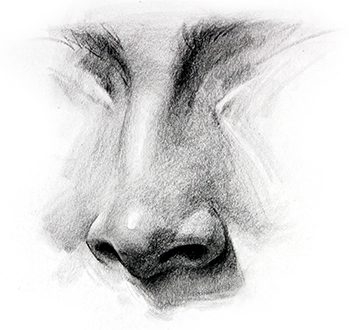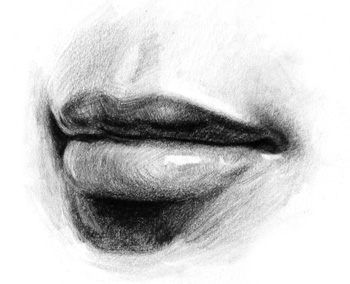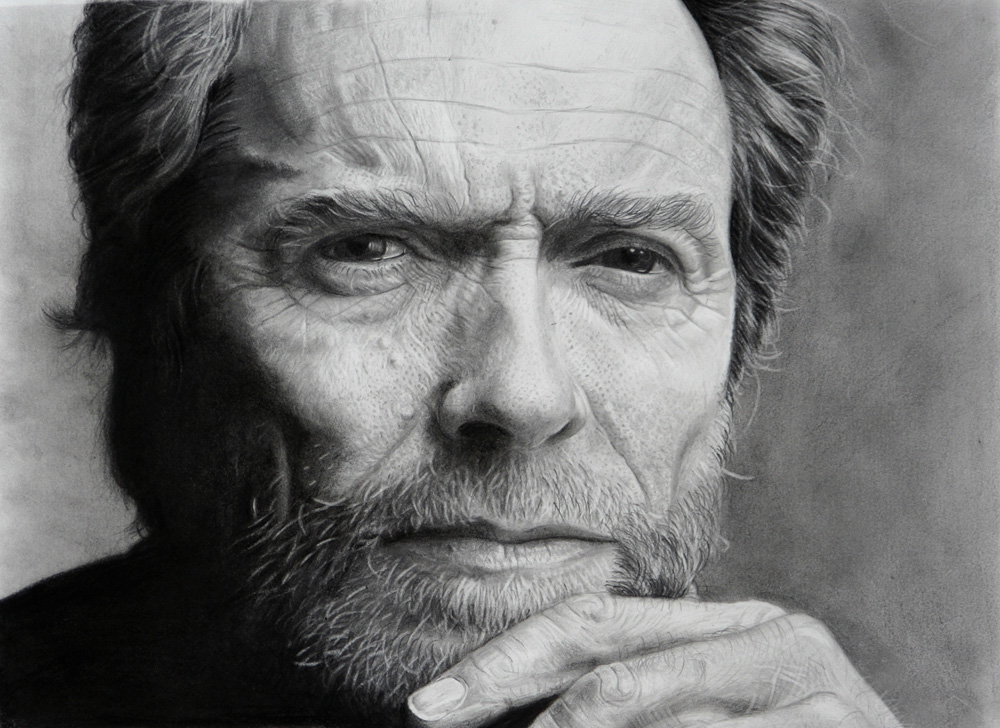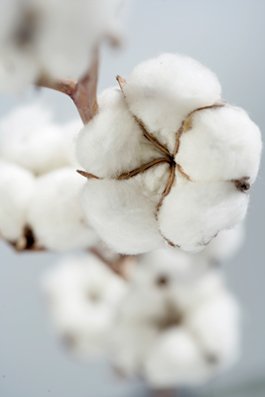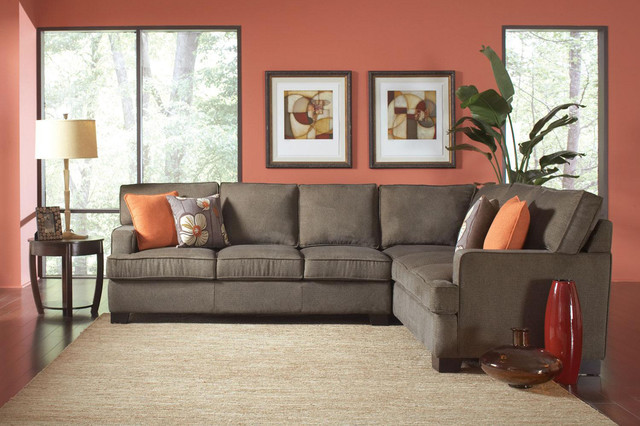Monthly Archives: March 2015
Drawing & Imaging | MoMa Study
1. James Endsor – Masks Confronting Death 1880
Oil on Canvas (32 x 39 1/2)
A group of masked figures confronts the figure of Death, centrally situated and draped in whitea color that infiltrates the entire picture. Composed of masks adorned with drapery, hats, and even blue glasses, the arrangement of figures recalls Ensor’s earlier still-life compositions. The ubiquitous masks in Ensor’s work were likely based on those sold in his family’s curiosity shop a few floors below his studio. He explained, “The mask means to me: freshness of color, sumptuous decoration, wild unexpected gestures, very shrill expressions, exquisite turbulence.” In this painting, the fantastical masked inventions appear to come alive and challenge Death—perhaps a reflection of the artist’s preoccupation with mortality and his hope that he might prevail against its inevitable dominion.
2. Dance (i) – Henri Mattise , early 1909
Paris, Boulevard des Invalides
Oil on Canvas
8′ 6 1/2″ x 12′ 9 1/2″

In March 1909, Matisse received a commission from the Russian merchant Sergei Shchukin for two large decorative panels, Dance and Music (now in the Hermitage Museum, St. Petersburg). This painting was made quickly as a compositional study for Dance, which was intended to hang on the landing of a staircase, approached from the lower right. This may be why the lower figure leans into the painting, increasing the sense of movement, and why the figure at left is so large, slowing it. Drawing visible beneath the paint shows that Matisse started with two smaller figures where the large figure is now.
3. Hope, ii – Gustav Klimt (1907-08)
Oil, gold, and platinum on canvas
43 1/2 x 43 1/2″

Although images of women and children are frequent in the history of art, depictions of pregnancy are rare. In Hope, II a woman with a skull nestled into her gown lowers her head toward her swelling belly. Below, three women also bow their heads—in prayer or possibly mourning. The ornate decoration in Hope, II nearly overwhelms its surface. Klimt was committed to craftwork, and was among the many artists of his time who combined archaic traditions—here Byzantine gold leaf painting—with a modern psychological subject. Klimt lived and worked in turn-of-the-century Vienna, home to Sigmund Freud, the father of psychoanalysis; Klimt’s exploration of formative drives like sex and death parallel Freud’s explorations of the psyche.
Space & Materiality | Material Connexion
On Friday the 7th of March, our Space & Mat class was held on W 50th st at a wicked cool materials resource display called Material Connexion. Relative to our previous assignment, in which we were instructed to research three every-day materials in depth, here we were to explore the many innovative and multi-dimensional materials and select three that depict similar qualities, aesthetics and overall practicality of the items we had chosen.
1. 100% natural rubber sheets – The Rubber Band

This is a newly selected item of mine, after i discovered the extreme limitations of the bobby pin. Combined with what i discovered at M.C, rubber has an immense elasticity and therefore flexibility which i feel will drastically help in the radical manipulation of it original form.
Material number 6414-01 is a 100% natural rubber sheets with high elasticity were the displayed sheets are highly flexible for wrapping around stainless steel frames and exhibit good colour fastness for indoor lights. Two sizes are available 40 x 40 x 0.12 in (100 x 100 x 0.3 cm) with a weight of 2 lb (800 g) and 47.2 x 47.2 x 0.12 in (120 x 120 x 0.3 cm) with a weight of 3 lb (1300 g). The differences in weight relate to specific applications requiring greater tensile strength for load bearing uses in seating elements. There are currently nine colors available: black, green, yellow, purple, pink, red, orange, blue and brown. Patterns and colors are also customizable. Applications include interior design and furniture elements.
The characteristics of this material has inspired my experimental satches, where i’m going to in three various ways connect the various rubber bands in order to make a flexible and durable ‘sheet’ of rubber with which i can then bend, cut, and morph into an egg like figure.
2. Popcorn – Microfibre Cloth
Bua Bhat Factory Ltd.
MC# 7168-01Category: Naturals

Hand crafted three-dimensional cotton textiles from waste fabric. Small spiral tubes of knitted fabric are stitched onto a woven base cloth, creating a vertical pile with a tufted effect. The textured surface is comprised of cotton fabric scrap from textile factories, creating new products from waste materials. The finished product is highly dye-fast and compatible with machine washing. The scrap fabrics are boiled to remove dirt and chemical impurities then dyed with azo-free dyestuff to the desired color. The dying is intentionally non-uniform and due to the variety of textiles incorporated the degree of dye pick-up is also irregular, creating unique patterns of color density and color absence. The textile is cut into strips, which due to the knit construction curl into spiral tubes, and sewn onto the base fabric. Local village women in northern Thailand do the dying and stitching. The textile varies in thickness, but remains at an average pile depth of 1.5 cm (0.59 in), the width, length and shape of the final product are fully customizable. Additionally, color and design can be customized with specific dye colors, and with multi-color patterning. Applications include home décor, carpets, pillowcases, upholstery, and apparel.
In relation to the micro fibre cloth, i was inspired by the ‘Popcorn’ and the manipulation of the cotton cloth to create spiral, rose- like figures, ultimately achieved by sewing multiple layers of the cloth onto one flat piece. This variation will be one of the three of my experimental swatches, along with weaving and padding techniques.
3. Xylatex – Cotton Pads
While this material doesn’t entirely replica my chosen material of cotton pads, having similar qualities this gave a great visual representation of the physical qualities and visual aesthetic of cotton pads. Both being soft, yet sturdy, the multi-layering of the material allows for a large extent of stretching, pulling and weaving, which is ultimately how i will achieve my transformation.

MC# 6381-01 suggests a series of decorative panels with individual structures that are laminated with 100% newwool felt. The felt is applied on all sides around the panel edges and has a regulating effect on the indoor climate, odors and room acoustics. Due to their surface texture, the light and shadow effects off the panels strongly depend on the viewing position. The weight, fire rating, and acoustic properties of the carrier panel material can be customized to comply with the demands of the panels. The felt layer is available in a weight of 240 g/m² in 34 standard colors. Thicker layers are available on request. Custom colors are available with a minimum order of 200 running meters. The maximal panel size is 118 x 47 in (3000 x 1200 mm). The product is also offered as completely assembled wall paneling and as partition wall panel. In addition, special acoustic panels for wall and ceiling coverings are in development. Applications are for high end interior design and furniture construction.
Drawing & Imaging | Inspiration
Int. Seminar | Week 4 Readings & Nolans “Memento”
For this week, we were assigned two readings which took a slightly alternative study of memory.
1. Roland Barthes- Camera Lucida
In essence, Barthes aims to provide an alternative insight into photography, asserting its classification as more than just a form of observation and perspective, while focusing specifically on the subsequent connection between the fundamental roles of emotion and subjectivity in the process. Ultimately, Barthes adheres to this apparent new consciousness presented by Photography, expressing a multitude of perspectives surrounding the notion of capturing its existential qualities of time and space. Moreover, Barthes successfully extracts the ‘study’ of photograph out of the realm of analysis, devising a new form of scientific examination. Essentially, by constructing such a customized framework, Barthes transitions beyond conventional determinations of art and technicality and draws upon matters of absolute subjectivity.
favourie quotes:
“I wasn’t sure that photography existed; that is had a ‘Genius’ of its own.” (pg 3)
“The This, in short, what Lacan calls the Tuche, the Occasion, the Encounter, the Real in its indefatigable expression.” (pg 4)
“the photograph is never anything but an aniphon of ‘Look’, ‘See’, ‘Here it is’, it points a finger at a certain vis-à-vis and cant escape the pure deictic language.” (pg 5)
“I possessed only two two experiences; that of the observed subject and that of the subject observing.” (pg 10)
“each time I am photographed.. I invariably suffer from a sensation of unauthenticity, sometimes of imposture.” (pg 13)
“for me, the photographers organ is not the eye (which terrifies me) but his finger.” (pg 15)

2. A Neurologists Notebook:
The Minds Eye
What the Blind See: Oliver Sacks
In Sack’s ‘The Minds Eye’, a consistent tension between fixation and flexibility within the human brain is evidently portrayed within his cohesive study of the dual relations between the mind and the brain. While Sacks inherently allows for sense of a multi-dynamic and extensively complex neuroplasticitical analysis, the author simultaneously highlights the various mirroring aspects articulated when uncovering the interrelation between experience and creative capabilities. Further, Sacks relentless questioning, “But to what extent are we—our experiences, our reactions—shaped, predetermined, by our brains, and to what extent do we shape our own brains?” reveals the underlying dilemma we face as humans when attempting to decipher between what is within our reach of control and what is beyond it; physically and psychologically.
“when phrenology was at its height, and the brain was seen as a mosaic of “little organs” subserving everything from language to drawing ability to shyness.” (pg1)
indicated a brain-mind organ beneath), neurology and neuroscience have stayed close to the idea of brain fixity and localization—the notion,in particular, that the highest part of the brain, the cerebral cortex, is effectively programmed from birth: this part to vision and visual processing, that part to hearing, that to touch, and so on.
“But to what extent are we—our experiences, our reactions—shaped, predetermined, by our brains, and to what extent do we shape our own brains?” (pg1)
“He seemed to regard this loss of visual imagery as a prerequisite for the full development, the height-ening, of his other senses” (pg2)
Additional Notes;
Neuroplasticity, also known as brain plasticity, is an umbrella term that encompasses both synaptic plasticity and non-synaptic plasticity—it refers to changes in neural pathways and synapses due to changes in behavior, environment, neural processes, thinking, emotions, as well as changes resulting from bodily injury.
FILM : MEMENTO (2000) – Christopher Nolan
The psychological thriller and neo-noir film Memento, directed and written by Christopher Nolan in 2000, was inspired by his brother’s short story Memento Mori. Nolan is known for his dark psychological thrillers that often have non-linear timelines. His films usually begin with the films end scene, and conclude with characters resolving or describing issues or events presented in the film but never fully explained. Nolan also has a recurring theme of justified dishonesty and vengeance for the death of a loved one in his films, which Memento is centered around. Nominated for two academy awards for Original Screenplay and Film Editing, this noir film low budget film follows main character Leonard Shelby on his quest for vengeance for the murder of his wife.
Interesting Insight into FIlm – http://www.avclub.com/article/imementois-puzzle-structure-hides-big-twists-and-b-88452

Space & Materiality | Study of Materials
1. Cotton Balls
Cotton pads are pads made of cotton which are used for medical or cosmetic purposes. For medical purposes, cotton pads are used to stop or prevent bleeding from minor punctures such as injections or venipuncture. Cotton was used in the Old World at least 7,000 years ago (5th millennium BC). Evidence of cotton use has been found at the site of Merhgarh, where early cotton threads have been preserved in copper beads. Cotton cultivation became more widespread during the Indus Valley Civilisation, which covered parts of modern eastern Pakistan and northwestern India. The modern mechanical cotton gin was invented in the United States in 1793 by Eli Whitney (1765–1825).
Cotton is actually the world’s “dirtiest” crop, because it requires such heavy doses of potent insecticides. Aldicarb, for instance, the second most commonly used insecticide for cotton, can kill a man with just one drop absorbed into the skin.
Cotton Flower
String of lights made from cotton balls
2. Microfibre Cloth
Microfiber or microfibre is synthentic fibre finer than one denier or decitax/thread. This is smaller than the diameter of a strand of silk, which is itself about 1/5 the diameter of a human hair. The most common types of microfibers are made from polysters, polymides (e.g., nylon, Kevlar, Nomex, trogamide), or a conjugation of polyester, polyamide, and polypropylene (Prolen). Microfiber is used to make mats, knits, and weaves for apparel, upholstery, industrial filters, and cleaning products. The shape, size, and combinations of synthetic fibers are selected for specific characteristics, including softness, toughness, absorption, water repellency, electrodynamics, and filtering capabilities.
Production of ultra-fine fibers (finer than 0.7 denier) dates back to the late 1950s, using melt-blown spinning and flash spinning techniques. However, only fine staples of random length could be manufactured and very few applications could be found. Experiments to produce ultra-fine fibers of a continuous filament type were made subsequently, the most promising of which were run in Japan during the 1960s by Dr. Miyoshi Okamoto, a scientist at Toray Industries. Okamoto’s discoveries, together with those of Dr. Toyohiko Hikota, resulted in many industrial applications. Among these was Ultrasuede one of the first successful synthetic microfibers, which found its way onto the market in the 1970s. Microfiber’s use in the textile industry then expanded. Microfibers were first publicized in the early 1990s in Sweden and saw success as a product in Europe over the course of the decade.In 1992, ACT began a line of microfiber cleaning products for American markets, the first major company to do so and is now Norwex.
Microfiber textiles tend to be flammable if manufactured from hydrocarbons (polyester) or carbohydrates (cellulose) and emit toxic gases when burning, more so if aromatic (PET, PS, ABS) or treated with halogenated flame retarders and aromatic dyes. Their polyester and nylon stock are made from petrochemicals, which are not a renewable resource and are not biodegradable However, if made out of polyprophylene, they are recyclable (Prolen).
There are environmental concerns about this product entering the oceanic food chain. However, no pesticides are used for producing synthetic fibres (in comparison to cotton). If these products are made of polypropylene yarn, the yarn is dope-dyed; i.e. no water is used for dyeing (as with cotton, where thousands of litres of water become contaminated)

3. Bobby Pins
A bobbing pin (also known as a bobby pin, or a kirby grip or hair grip in the United Kingdom) is a type of hairpin, usually of metal or plastic, used in coiffure to hold hair in place. It is a small double-pronged hair pin or clip that slides into hair with the prongs open and then the flexible prongs close over the hair to hold it in place. They are typically plain and unobtrusively colored, but some are elaborately decorated or jeweled. Bobbing pins became popular in the 1920s to hold the new bobbed hairstyles.
Multi-uses, examples consist of:
- As makeshift lockpicks by straightening out two bobby pins to pick the lock.[3]
- They can be used in place of a clothespin for drying lightweight articles.[3]
- They can be used as clips to hold multi-portion packages closed between uses.[3]
- They can be slipped over book pages as a bookmark.[3]
- Bobby pins may be used to thread laces through pre-cut holes in leather and other heavy materials.
In 1899 the bobbing pin came into wide use as the hairstyle known as the “bob cut” or “bobbed hair” took hold. It was invented in Paris by Robert (Bobby) Pinot. As foreigners caught wind of his invention, the hairstyle gained momentum and the pin became known as “Bobby’s pin.” This trend gained popularity in the 1920s because the hair grips kept their bobbed hair in place. A trademark on the term “bobbie pin” was held for some decades by Smith Victory Corporation of Buffalo, New York. A trademark infringement claim made by Smith Victory Corporation against Procter & Gamble regarding their naming their home permanent product Bobbi was settled in the 1950s by a payment to Smith Victory Corporation by P&G. The term is now in common usage and therefore is no longer a valid trademark. Similarly, the British “kirby grip” is derived from the trademark Kirbigrip, used by a Birmingham manufacturer of such pins, Kirby, Beard & Co. Ltd.
See Attached Link :
http://www.cosmopolitan.com/style-beauty/beauty/advice/a6123/life-changing-bobby-pin-tricks/







